The history of the town
The history of the town of Burghausen begins with the first settlements and shows the development up to the pulsating business location.
resultsSorry, we didn't find a result for you!
The history of the town of Burghausen begins with the first settlements and shows the development up to the pulsating business location.
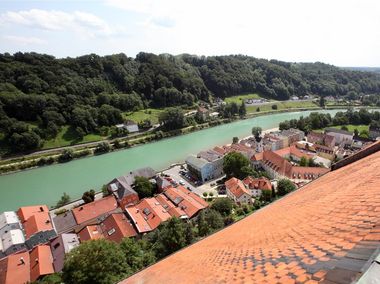
A precondition for the emergence of a settlement with a water customs station on the Salzach river was a castle whose prominence and expansion over the centuries would have a decisive influence on the development of Burghausen. After the dismissal of Duke Tassilo III (in 788), the castle becomes the sovereign possession of the Carolingians.
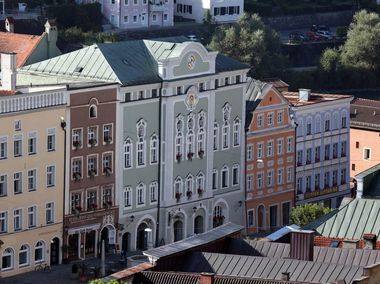
First mention in the official records as an imperial property (1025). Later, Emperor Konrad II appoints the Counts of Burghausen to administer the fiscal assets (1027). Duke Henry the Lion takes possession of the castle and valley settlement, which already had an urban character (1164).
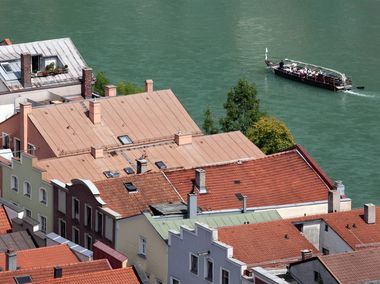
First the castle (in 1180) and then the town (in 1229) become the property of the Wittelsbachs; it is presumed that the town charter was conferred shortly afterwards. From 1255, after the first partition of Bavaria, the town experiences the beginnings of a political and economic upturn as the second residence of the Dukes of Lower Bavaria. The trading of salt from Hallein in particular is the lifeblood of the town.
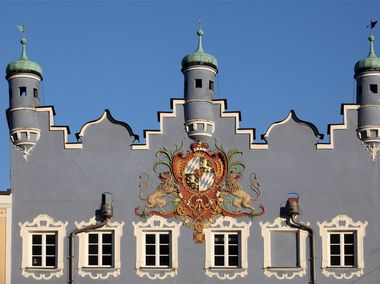
Conferral of important privileges is granted to the town by Emperor Ludwig the Bavarian (1336 and 1343). Expansion of the town to the north and south (Zaglau and Spitalvorstadt). Town fire in 1353.
Administrative centre as a sovereign tax authority and “Viztumamt” (seat of governmental power and financial administration) from 1392.
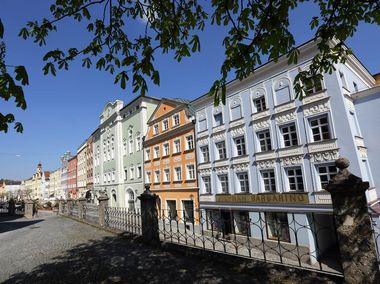
The town flourishes and experiences its hey-day under the last three Dukes of Lower Bavaria, Henry, Ludwig and George, known as “the Rich” (1393-1503). Devastating town fire (in 1504). After the Landshut War of Succession, the town is the seat of one of the four tax authorities in the newly partitioned Bavaria (1505) with 15 administrative and judicial districts. Assignment of the magistrate’s office (1581). Loss of the main source of income from the salt trade with the establishment of the ducal salt monopoly (in 1594). Beginning of a period of administrative and economic decline lasting for several centuries.
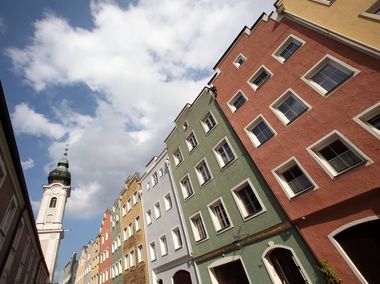
Heavy casualties and strains during the Thirty Years War (1618-1648) and during the Wars of Succession (1701-1714 and 1740-1745).
Burghausen becomes a border town with the surrender of the Inn quarter and the subsequent loss of the economically ideal hinterland (Peace of Teschen follows the Bavarian War of Succession from 1778-1779).

The town appears to be under a curse: the hardships of the Napoleonic Wars and the dissolution of the government (1802), the town is stripped of the title of “capital” bestowed in 1688 (1807), the loss of river navigation and the withdrawal of the garrison (1891) result in the decline to an insignificant small town.
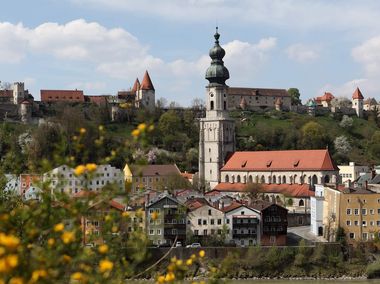
Economic upturn after the establishment of the Wacker plants (1915). The new town emerges. The unique, self-contained character of the old town is preserved. Restoration of the old town begins with the construction of a flood-control dyke and quay (1969-1971).
It appears that you are using Microsoft Internet Explorer as your web browser to access our site.
For practical and security reasons, we recommend that you use a current web browser such as Firefox, Chrome, Safari, Opera, or Edge. Internet Explorer does not always display the complete content of our website and does not offer all the necessary functions.